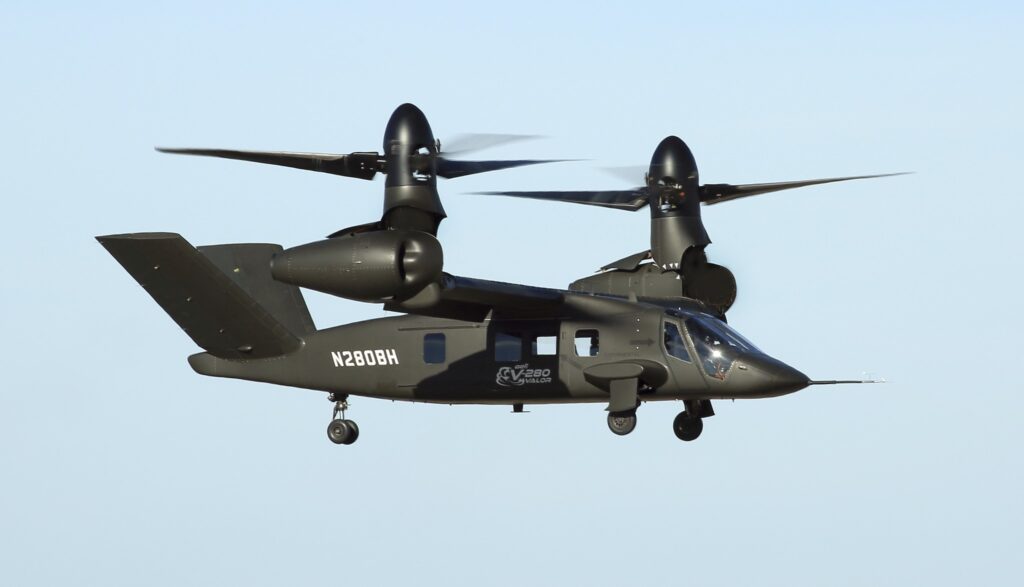
NATIONAL HARBOR, Md. — Bell, a Textron company, is marketing its manned and unmanned tiltrotor aircraft to be the eventual replacements for the Navy’s MH-60R/S helicopters.
Carl Forsling, Bell’s senior manager for military sales and strategy, told Seapower April 4 at the Navy League’s Sea-Air Space expo that the Bell tiltrotors would be ideal for implementation of the Navy’s Distributed Maritime Operations concept because of their speed, range and payload.
The two tiltrotors are the versions of the unmanned Bell 247 Vigilant and the manned Bell 280 Valor.
The Valor, currently offered as a replacement for the U.S. Army’s H-60 helicopters, is larger than the 247 and is designed to carry 8-12 passengers. It has two engines, one each at the wingtips driving a tiltrotor. Unlike those on the Bell-Boeing V-22 Osprey, the engines do not pivot, simplifying the mechanics of the movement and reducing cost. The marinized Valor would have a pivoting wing like the V-22 for storage in a ship’s hangar. The aircraft would be hardened for electromagnetic protection and be marinized for corrosion control in the salt-water environment. It would assume the roles of the MH-60S, including plane guard, rescue, medical evacuation and logistics.
The marinized unmanned Vigilant would replace the MH-60Rs on surface warships such as guided-missile destroyers. The folding rotors and pivoting wing would allow storage in a warships’ small helicopter hangars. The Vigilant could be used for roles including surveillance, antisubmarine warfare, precision strike and aerial refueling.
With both aircraft replacing helicopters, the speed and range advantage would allow the tiltrotors to cover more area at a faster rate, Forsling said, while carrying heavier payloads.
- Insitu Going Strong at 30, Focusing on Maritime Operations - April 8, 2024
- Navy Awards Boeing Additional Funds for MQ-25 Drones for Testing - April 3, 2024
- Benign 4th Fleet AOR Useful for Unmanned Vehicle Operationalization, Admiral Says - March 27, 2024






